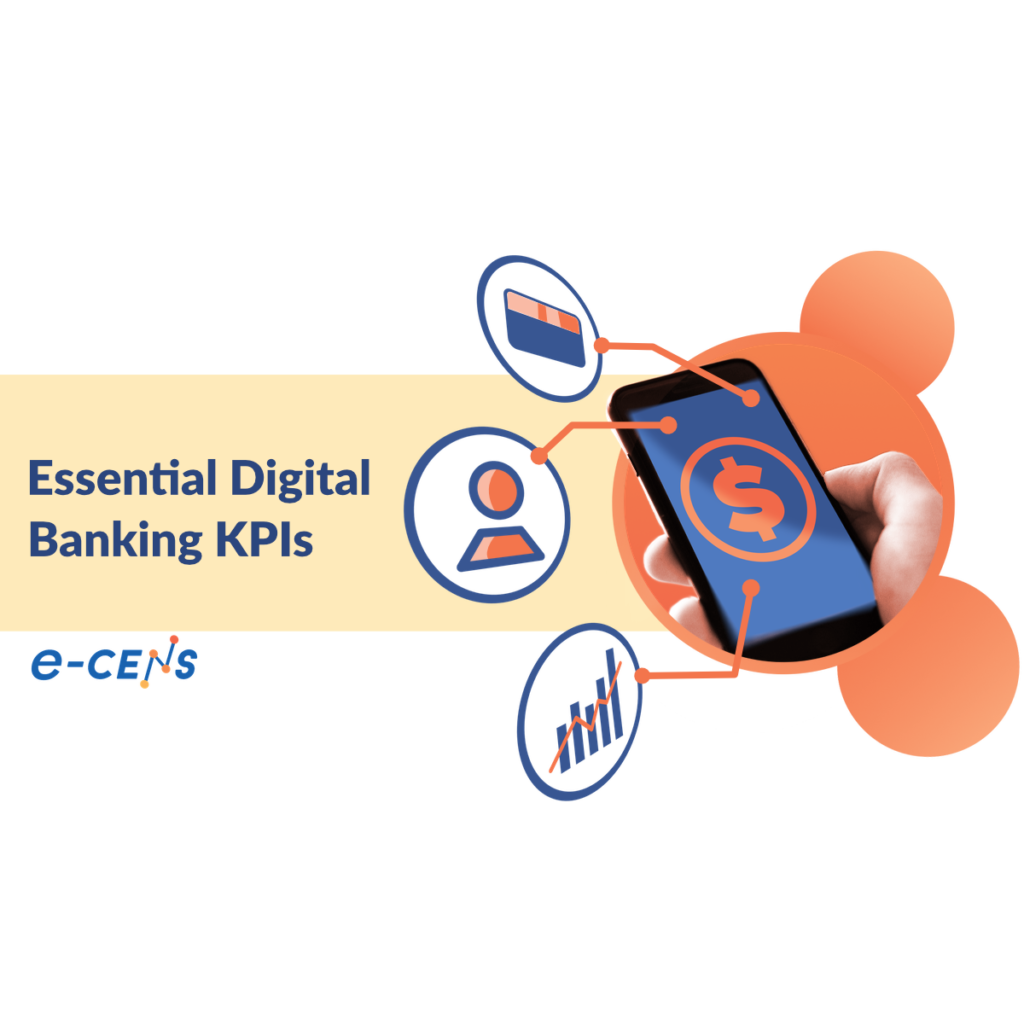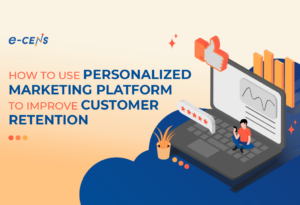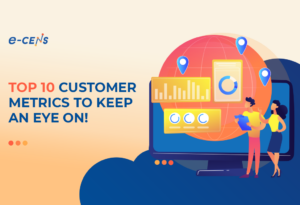A 2021 study by Chase indicates that digital-first banking appeals across generations today. 62% of all consumers consider Mobile banking Apps “indispensable”, while 73% use Mobile Apps as their primary money management method.
There is no denying the way we bank has changed, and digital banking is playing an increasingly larger role in how we access and manage our money on a daily basis.
Banking as a service (BaaS) has brought a new sense of accessibility to the average consumer. It has also introduced a host of new performance and success metrics for the financial sector.
In this blog, we discuss some of the most important digital banking KPIs and metrics to keep your eye on.

Why is it important to Measure Data?
An App- or web-based business model brings with it a wealth of data that can be analyzed. This data can provide insights into company growth and profitability, customer behavior, and the effectiveness of advertising campaigns.
Still, digital-first banking is a relatively new phenomenon. Many companies are still in the process of identifying the most effective ways to use the deluge of data they’re faced with.
Keep in mind: digital banking KPIs are not to be confused with Quality Metrics (QMs) for digital banking. It is important to treat the data from each class of metric appropriately – and doing so can make all the difference in a highly competitive data-driven market.
For a detailed explanation of what differentiates a KPI from a Quality Metric, check out this short video by e-CENS’ Holger Tempel:
3 Most Important Key Metrics for Digital Banking
We’ll start by taking a look at QMs that assist digital-first banks, including those that are undergoing a digital transformation. We take care to steer clear of so-called vanity metrics, such as the number of customers using a digital platform, or the number of transactions made. Such metrics may look good at a presentation, but they don’t contribute to your overall business strategy or help refine your customer experience.
1. Visit-to-lead ratio
If you’re not converting website visitors into sales leads, your business is likely to be flagging. The proportion of your website visitors that become sales leads over a pre-defined period of time is called a visit-to-lead ratio. This metric helps you understand how well your website generates interest in your services. It is a type of conversion rate metric specifically designed for companies that primarily operate online.
Visit-to-lead ratio is an undeniably valuable metric, as conversion rates are indicative of company success and growth. It also provides valuable information about the effectiveness of your website and overall marketing strategy.
In order to calculate the visit-to-lead ratio, divide the number of visitors who became leads by the total number of visitors, then multiply this figure by 100.

While the visit-to-lead ratio is very useful, it won’t give you insight into the number of sales actually generated per visit. In order to benefit from this information, we must use a different quality metric – the lead-to-sales ratio.
2. Lead-to-sales ratio
Lead-to-sales ratio relies on qualified leads to ascertain how many, proportionally, result in sales. A qualified lead is a potential future customer, based on certain criteria relevant to your business requirements. As qualified leads make up part of the penultimate stage of a customer’s journey, they are part of the lead-to-sales ratio.
To calculate the lead-to-sales ratio, divide the number of qualified leads that became sales by the total number of qualified leads, then multiply this by 100.

Lead-to-sales ratio plays a major role in digital banking data analytics. It is extremely effective as a way to assess overall business performance and draw comparisons with competitors.
Note that the way in which companies define conversions varies. So, before you can put your data to good use, you should establish your definition of conversion. This will provide better clarity when evaluating marketing performance, or presenting results to partners or investors.
3. Customer Lifetime Value
It costs less to foster repeat business from your existing customers than it does to generate new sales. Customer loyalty is therefore a key component of driving growth and increasing profitability. Measuring how valuable a customer is, not just on a purchase-by-purchase basis, but across their entire relationship with your company, provides a vital insight into customer behavior. This, in turn, can be used to generate new leads.
Customer lifetime value (CLTV) is an important metric in web analytics for banks – due to the typical longevity of the bank/customer relationship. It’s useful for spotting signs of attrition – for example, if a customer is beginning to use the service less. You can improve your CLTV by focusing on customer experience and improving the functionality of your App. Personalization of marketing and promotional messages is also something that can improve CLTV.
A simple way to calculate CLTV is to multiply customer value by average customer lifespan.
To calculate customer value, multiply the average purchase value by the average number of purchases.
Take the example of DBA, a Singapore-based bank. The company found that although its digital customers cost 1.5 times the money to serve than non-digital customers, they generated twice the income. The bank found that digital customers generally took out more loans, invested greater amounts, and had higher deposits. So, for digital-first banks, customer loyalty is of great value.
3 Essential Digital Banking KPIs
Now let’s take a look at some of the essential digital banking KPIs. These will allow you to track the progress of a specific business initiative across a pre-determined time frame using quantifiable measures. KPIs provide targets for your company, milestones to map your progress, and insights that will help with future decision-making.
1. Average session duration
Session duration is defined as the time frame during which a user makes regular interactions with a site or App. As a KPI, this is more useful than the time-on-page metric, which records the time between a user landing on a page and leaving. Average session duration factors in activity and contributes to the user engagement story.
Tracking average session duration across Apps is important, as digital-first banking relies on Mobile banking analytics to determine customer behavior. Morning Consult’s 2020 survey for the American Bankers Association found that Mobile platforms have become the most popular banking channel.
2. Cost per lead
One of the most commonly used digital banking KPIs is cost-per-lead. Cost-per-lead measures how cost-effective your overall marketing strategy and individual campaigns are at generating new leads. The ultimate goal is, of course, to keep the cost-per-lead at a minimum. If the cost is too high, it is a sign that your campaign is faltering and in need of a rethink.
Aside from determining the viability and sustainability of your marketing efforts, CPL also provides important data for your return on marketing investment calculation and Click to Lead Rate (CLR) formula – two other crucial metrics.
3. Cost per install
Whenever a customer installs your digital-first banking App, your brand is charged a fixed or bid rate by the advertiser. This differs from other business models, where a company will pay when an advert is viewed. Cost per install (CPI) is an important metric that App marketers use to measure their advertising budget: vital information in an industry that is becoming increasingly driven by Mobile platforms.
CPI also gives insights into the effectiveness of the ad networks targeting and puts emphasis on placing adverts where conversion rates are high. This will also provide insights that will assist marketers with future campaign targets.
To calculate CPI, divide the number of installs by the cost of each install.

4. Onboarding
Onboarding is the first stage of the customer journey once they start using your service. This stage of the journey often defines the customer’s relationship with your brand, and is, therefore, critically important. However, compliance regulations make onboarding a lengthy process, requiring the customer to provide extensive personal information to the bank. Only once that information is verified, the sign-up process can be completed.
Numerous metrics are factored in to analyze the success of customer onboarding:
- Number of conversions – how many users begin the process
- Conversion ratio – how many users complete the sign-up process from beginning to end
- Conversion time – how long the process takes, how many steps there are
- Abandonment rate – users may abandon if the sign-up process takes a long time, or requires information that they are not likely to have to hand
Research by Deloitte has found that 40% of consumers have abandoned a bank’s account opening process. To avoid losing such a large portion of potential clients, it’s important to keep sign-up as concise as possible. A streamlined onboarding process will ease guiding the user toward the next stage of their journey – becoming a valuable customer.
Conclusion
Digital-first banks put customer experience firmly at the center of everything they do – and your digital banking KPIs should reflect that.
Are you ready to elevate your web and Mobile analytics to create a seamless experience for your clients?
Our consultants are here to help you build the right data analytics framework for your needs: contact e-CENS today to learn more.




